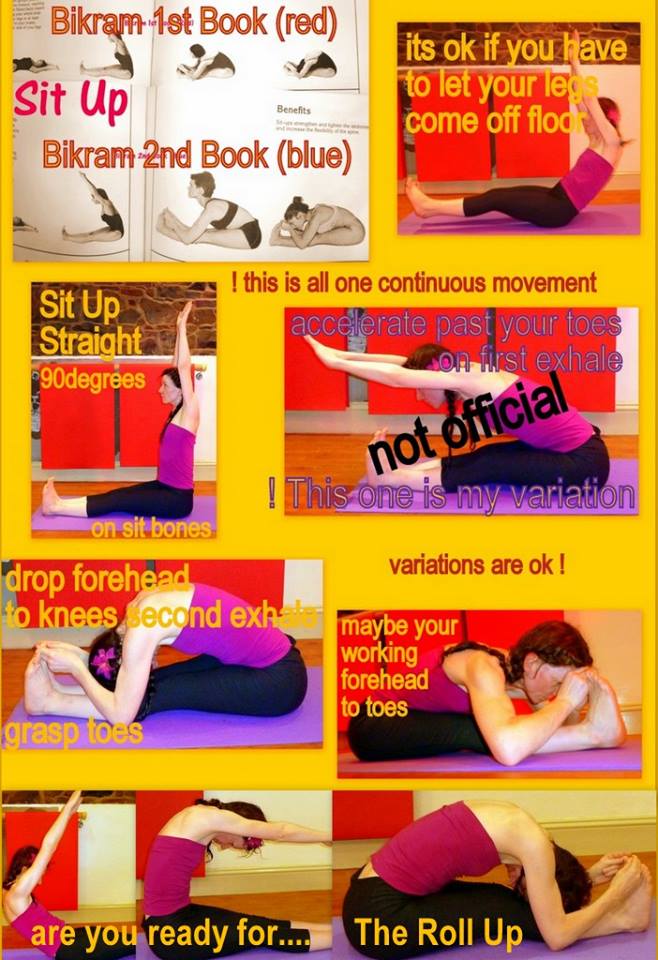If you don’t practice Bikram you might wonder how complicated can a Sit Up be?
It’s a Bikram Yogi thing folks! Only the Bikramites out there will be interested in the finer details and so these posts are written for them. These are the sort of things that occupied my mind as a serious beginning Yoga student when I was trying to get it right and there was no clear definitive explanation – just a lot of vague. I would not say this is definitive but as close to as you might get without me writing a book about Sit Up to qualify every statement herein :). Look away now if you feel there is nothing for you to gain from this post :).
There is no Sanskrit word for ‘Sit Up’. Although part of the 26/2, technically it is not an Asana. In Bikram method it is an efficient transition from the floor and preparation for the big seated forward bend at the end of the class. {You WILL use your abdominal muscles in the sit up but remember their primary function is stabilisation and in Bikram Yoga you probably challenge your abdominal muscles MORE in the poses that require stability not a fast movement action like this; although it ALL adds up to giving your body good attention to activating/firing muscles up and putting them through their paces regularly 🙂 keeping things in good working order.}
There are many variations on sit ups out there in various disciplines. The dialogue is skinny on detail leaving almost too much room to manoeuvre. This was another one of those things that wasn’t expounded upon way back at my TTC (2001) and when you spoke to other trainees about it they all had plenty and varying things/opinions to say about how it should be done/how they were taught, interpretation and mis/interpretation of the brief instructions. And so time passed and I gather that the today’s trainees are very clear on the evolved sit up and how it ‘should be’. I think them coming into their own in the era of Yoga competition has made them clear on the latest ideal.
The good thing about doing this stuff for so long and having gone through the ‘vague’ era 🙂 is that I had to keep an eye out on the ‘trends’ and changes of sit-up. As a studio owner more recently I also had to make a decision that it is important to be consistent whilst minimising risk. Bikram being a ‘beginning’ Yoga class and the people coming to YM when we opened never having done this before, I choose to set the Sit Up at ‘Default Safety’. As their practice progresses and their body opens up I see them gradually and naturally move into the ‘ideal’ version or if they haven’t and they are ready I let them know to adapt their sit up. It is not necessary to take chances in ANY Yoga and certainly not in a beginning Yoga class. The joys of having made practically every mistake there was to make in this Yoga 🙂 I am happy with my final choices here.
I am not dealing with a roomful of adepts, trainee/teachers or competition Yogis (although some do rock up on occasion – ALL have the potential if that is the wish). We are a studio of everyday people and some with real body issues and serious tightness that they are working on. Harmony comes over time but it can take time.
NB The fast pace of Sit Up also has a bearing on what instructions get articulated in class, it is just not possible to give EVERY meaningful instruction in the moment and so a teacher will make choices of words, vary it from class to class, give occasional demo to get the message across or perhaps do a post like this one 🙂 .
1. THE OFFICIAL BIKRAM WORD
The Bikram ‘Dialogue’ says: “Toes and heels together. Flex your feet, keep your heels on the floor. Arms over your head, cross your thumbs, arms and head together. Inhale breathing, quickly sit up. Exhale breathing, grab your big toes, double jerk. Touch your forehead to the knees, elbows to the floor.” To EXPAND on this slightly using the most recent Bikram book (orange cover) which says: “legs are locked”… “suck in your stomach and sit up straight” “don’t stop when you are at the 90-degree angle… start your exhalation and dive forward. As you do suck in your stomach to activate the core muscles and as you come down look at the stomach, bring your chin toward your chest and curl your torso inward and down {create front side compression}. TRY to bring the forehead to/towards the knees… as you naturally bounce back up a little bit …. at the top of your upward bounce exhale forcefully again as you come back down to the curled and folded position”… these exhales decrease resistance, compress the abdomen, enhance your acceleration”… at the end of second downward arc bring body to rest briefly ideally with forehead to knee… grabbing your feet or toes… make sure you do this in one continuous motion and don’t forget the bounce and double exhale”… ! DO THIS ONE IF YOU EVER HAVE BIKRAM CHOUDHURY STANDING IN FRONT OF YOU 🙂 !
Joseph demonstrates a nice SIT UP in the attached video although he does not sit up straight he goes straight to dive. He is saying THIS is the ideal to stretch the back and strengthen the abdomen and I have seen this plenty and I do this and it is fine. It is also a good demo of the double exhale which is vigorous !
https://www.facebook.com/video.php?v=10155218821815473&pnref=story
2. VARIATIONS ON SIT UP
If a variation is what you NEED to do on the day that is fine. I’ll just be looking out to make sure ye are not doing anything that is totally contrary/unsafe. If it is where you are at in your Yoga and you want to touch your forehead to your toes instead of your knees as you warm up in the sit ups during class I don’t mind, it is not in the instructions but I know you may be preparing yourself for the final big seated forward bend at the end and this is clearly pictured in Bikram’s blue book as finish of Sit Up {ALTHOUGH. If you look closely at the pictures in the blue book one sees they are not all the same person, sequence or even same era and I strongly suspect that the picture of ‘sit up destination’ on p119 is actually a picture of someone doing posture number 24/2 ‘Janushirasana’ ~ a bit of a cut and a paste effort for the purposes of illustration in the book}.
If you are struggling you do not have to do FULL sit up. If you want you can let your legs bend and come off the floor (see my picture example) before you start moving to help create a momentum to come up. Don’t despair if grasping your toes or touching your forehead to your knees is currently not your ‘state of Yoga’. It is what it needs to be on the day. You will find out in your class which muscles need lengthening and which muscles need strengthening and you will be able to work on the core stabilizers of the lumbar spine. In time as your body reorganises you will be able to do more. KEEP TRYING.
3. IF YOU ARE EXPERIENCING BACK PAIN/PROBLEMS
To protect your back in practice DO NOT DO THE SIT UP. Bend your knees to your chest and roll over on your side and push yourself up with your hands. Bikram agrees with this stance (orange book) which although is not in the Dialogue I say it before the Sit Ups commence every class because there are usually a few people in the room who have come to Yoga with a back problem of some sort and they are using Bikram Yoga as part of their therapy. Bikram Yoga is very effective at addressing and easing various back issues (that’s why many come) but it can take time. Students in excellent back health and mobility can avoid becoming prone to disk injury by following instructions to the letter. All that said, you don’t give up your free will power when you walk through the YM door and I often have people who I have specifically told or asked NOT to do sit up who continue to do it. There is nothing I can do about this, it is is their personal choice…
4. Trisha’s ‘DEFAULT SAFETY’ SIT UP
Arms up over head, thumbs crossed, flex your feet, engage your abdominals, inhale sit up straight, arms and head together. At the top of your inhale you will be at 90degrees, mentally check you are on your sit bones and commence your exhale accelerating stretch forward past your toes create length in your spine. As you gently bounce of your thighs mentally ensuring your pelvis has definitely moved, grasping your toes as you come down for the second exhale, now curling in and drop your face into shins or knees (if you are able). This is all a very fast smooth continuous movement. There is no stop at the 90degrees.
If you’re pelvis hasn’t shifted/tilted at the top of the inhale with your initial move then please DON’T yank yourself forward or round in. Just keep trying and give yourself time.
WHY DO I HAVE THIS DEFAULT AT YM? Whether it be stress responses, emotional body, lack of body-mind connection or poor posture causing tightness, I have observed that the vast majority of beginning practitioners cannot do/are not ready for the ‘ideal’ Sit Up. It worried me the number of people with tight hamstrings pulling/holding their pelvis under (making it tilt back) that could not achieve sitting on their sit bones but still yanked themselves forward and down from the top of the exhale in this fast moving action. Forward bends in general, of which the Sit Up is one, can pose a risk to the lumbar disks. PREVENTION IS BETTER THAN CURE. The Sit Up has momentum, force of gravity, effects of leverage and compression all wrapped up in this swift movement! This puts added pressure on the low lumbar disks. Do not tug or yank yourself forward. THE POSITION OF THE PELVIS IS KEY. If the top of the pelvis tilts backward while sitting or if it fails to tilt forward in a forward bend it forces a flexion at the L4-L5-S1 joints (which are already subject to significant mechanical stress just from day-to-day living; they already carry the most weight/compressive forces). Make sure you are sitting on your iscial tuberosity (sit bones) first. WHY THE INITIAL FLAT SPINE ON THE FIRST EXHALE? Attention to this will help elongate the spine and widen the space between the disks.
Please Note! This is not how it is taught elsewhere. There should be no conflict for the Yoga student and I recommend you follow the guidance of the instructor you have chosen to place in front of you.
I hope this explanation is helpful; all this said there are other nuances to these versions that are left off here but crop up in class and they are fine, they are part of THE JOURNEY.
Namaste ~ Trisha
June 2015

